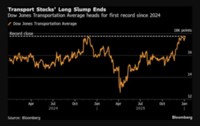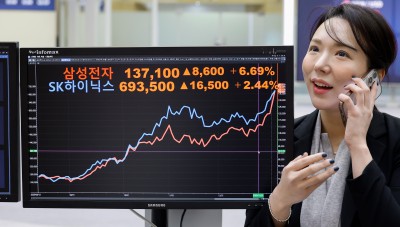At the National Conference on Public Employee Retirement Systems Annual Conference, New Orleans, Louisiana
May 20, 2008
The Economic Outlook
These have been challenging times for the U.S. economy. Homebuilding and house prices have gone through prolonged and deep declines; the resulting broad pullback in financial markets from risk-taking and credit extension has transmitted some of the weakness in the housing sector to other types of spending. At the same time, a substantial run-up in the prices of petroleum and other commodities has simultaneously increased inflation and damped spending on other goods and services. I don't need to tell you that challenging times for the economy are also challenging times for those entrusted with managing pension funds. So I thought you might find it useful this morning for me to review where I think the economy is and where it might be going. That, in turn, depends critically on developments in financial markets, and I'll have something to say about those developments as well. Finally, I'll end with a few thoughts about what the recent turbulence in financial markets may imply for the administration of public pension funds.1
Recent Economic Developments
Economic activity this year has been quite sluggish. The weakness in activity continues to be shaped by the fallout from the contraction in housing markets that began two years ago. The demand for housing continued to decline early this year, and sales could fall even further in coming months, given the tightness in mortgage lending. Nonprime mortgages have all but disappeared from the mortgage market. Moreover, with only limited securitizations of prime jumbo loans, rates on those loans are relatively high, and their share of total originations has shrunk significantly since last July. Rates for fixed-rate conforming loans have dropped to close to 6 percent. But even there, the good news is tempered somewhat because, with delinquencies on prime mortgages rising, the government-sponsored enterprises have tightened their standards for conforming loans and added fees for borrowers with lower credit scores and less collateral. All prominent measures of house prices are now showing declines. Although lower prices would eventually help bolster housing demand, the expectations of further declines in prices may currently be exacerbating the difficulties in housing markets.
In this environment, homebuilders have made only limited progress in reducing the very large overhang of unsold new homes despite having cut starts to a level not seen since early 1991. Single-family starts fell to an annual rate of 690,000 in April; the pace of new activity has now dropped by a 1/2 million units in each of the past two years. The supply of existing homes on the market also remains quite high and is likely to be augmented in coming months by rising foreclosures. As a result, further cuts in construction appear to be in train.
The sharp contraction in housing was at the center of the slowdown in economic activity that began late last year. By early this year, however, the spillovers from the housing market correction onto other sectors of the economy began to show through more clearly; consumer and business spending, which had slowed at the end of 2007, has remained on a shallow trajectory since then.
In particular, spending on consumer goods, including new motor vehicles, has been soft. Since last fall, rising prices for energy and food have made a significant dent in the purchasing power of consumers' incomes. Moreover, despite some improvement in the stock market recently, households' net worth has deteriorated since the beginning of the year as the prices of homes have declined; and credit conditions have tightened. In reaction to these adversities, households seem to have become extremely downbeat about prospects for jobs and income.
Business spending for equipment and software edged down in the first quarter, and the environment for capital spending remains difficult; businesses are uncertain about the economic outlook, and lenders have adopted more stringent lending standards. However, while conditions are quite tight for riskier firms, credit does appear to be more readily available to investment-grade businesses.
More difficult financing conditions also seem to be leaving an imprint on nonresidential construction, which now appears to be softening after a couple of years of sharp gains. According to our April Senior Loan Officer Opinion Survey on Bank Lending Practices, a large majority of banks, which are the largest provider of commercial mortgages, reported tightening standards on commercial real estate over the preceding three months.2 The issuance of securitized commercial real estate loans, which funds a little more than one-fourth of all outstanding commercial mortgages, has slowed to a trickle. Sales of commercial properties fell sharply in the first quarter, and late last year prices appeared to have begun to decline.
A bright spot has been the external sector. Although the pace of real activity in some foreign economies also appears to be slowing, the overall rate of expansion in our trading partners--especially emerging Asian economies such as China--remains solid. Some of the pullback in U.S. demand has been absorbed by declines in imports, and the decline in the dollar has made U.S. firms more competitive in export markets, though it has also accentuated inflation concerns.
The deceleration in economic activity has been reflected in the labor market, where layoffs have risen and hiring has slowed. Payroll employment has now fallen for four consecutive months. The combination of job losses and the greater difficulty in finding jobs has pushed the unemployment rate up to 5 percent in recent months.
Financial Market Developments
As I've just noted, the tightening of financial conditions as a result of stresses in financial markets has been an important factor in the recent slowdown of the U.S. economy. In recent weeks, however, U.S. financial markets have improved somewhat. Equity prices have risen noticeably since mid-March. Spreads on both investment-grade and speculative-grade corporate bonds have generally narrowed over the same period, and investment-grade companies, including financial institutions, have been able to raise funds in credit markets. Financial intermediaries have also tapped equity markets to bolster capital depleted by the recognition of losses on loans and securities.
Clearly, some of the extraordinary increase in risk aversion that we saw earlier this year has been reversed. Apparently, a combination of factors has contributed to a perception that financial markets and the economy are less likely than some had feared to experience very adverse outcomes: Among those factors were Federal Reserve actions to bolster liquidity and ease monetary policy, the success of a number of financial institutions in raising capital, and incoming economic data and earnings reports that were not as weak as market participants had expected.
Still, the persistence of relatively wide spreads in many markets suggests that investors continue to be worried about credit quality; the issuance of speculative-grade bonds has been scant this year; and securitization markets for many types of mortgages continue to be impaired. In addition, term bank funding markets remain under pressure as banks and other lenders in these markets conserve capital and liquidity and limit risk-taking. Banks have further tightened lending standards across a wide range of business and consumer loans.
These findings generally suggest that market participants remain wary, and in that environment, improvements in financial markets are vulnerable to negative news on the economy or the extent of credit losses. I expect further, but gradual, improvement in financial markets. Credit flows need to be re-channeled and re-intermediated with less leverage, less rollover risk, and greater compensation for taking risk than before the turmoil began last year. Securitized assets need to be simpler, more transparent, and less reliant on the imprimatur of a credit rating agency. Lenders and other investors need to gain greater confidence that they understand the extent and incidence of the losses arising from the lax lending practices of recent years and the current economic slowdown. Those processes are likely to be slow and they may be set back from time to time, but they will ultimately succeed in giving us a more robust financial system than we had a year ago.
The Economic Outlook
Although the current financial and economic situation remains quite difficult, I believe that the most likely scenario over the next year or so is one in which economic activity firms during the second half of this year and then gathers some strength in 2009. In the near term, consumer spending is likely to receive a boost from the rebates that are now flowing to taxpayers. Although the timing and the magnitude of the spending response are uncertain, economic studies of the previous experience suggest that a noticeable proportion of households respond reasonably quickly to temporary cash flows. Of course, the stimulus to domestic production will depend on the extent to which the additional demand is met by a temporary drawdown of inventories or an increase in imports rather than by an expansion in domestic output. But to date, businesses appear to be keeping tight control on inventories, and a reasonable assumption is that we will see a temporary lift to the economy in coming months.
The pace of activity should continue to improve next year, with an important part of the gains coming from the abatement of the forces currently restraining activity. That said, a number of factors suggest that the recovery could be relatively moderate. I've already mentioned my expectation that financial market functioning and risk appetites will continue to improve, but that recuperation will require some time. As all that happens, the policy easing the Federal Reserve has put in place over recent months will begin to show through more in reductions in the cost of capital and the greater availability of credit. The demand for housing is not likely to rebound substantially for a while after this episode, but the drag on growth from declining activity and prices in the housing market will ebb as excess inventories are worked off and affordability improves. Consumption should pick up along with the improvement in jobs and income, though a gradual increase in the saving rate would be expected now that households will no longer be counting on increases in the value of their homes to finance retirement or other future spending. With a lag, business investment should turn up as prospects for a sustained expansion of economic activity become clearer. And both households and businesses should benefit from a leveling-off in the prices of energy and other commodities along the path implied by futures markets.
As with any forecast, mine is subject to a number of uncertainties. One is the extent of the housing correction ahead of us. If the retrenchment in house prices becomes deeper than anticipated, its effect on lenders and financial markets could further damp overall economic activity. We are in uncharted waters when the financial system becomes so disrupted, though we should consider ourselves fortunate that we have very few similar historical episodes on which to base our judgments. In such circumstances, uncertainty about how credit conditions will evolve and how businesses and households will react to changing terms and conditions means that we can have even less confidence than usual in our economic forecasts.
Inflation
Another area of concern is the implications for inflation as a result of the recent run-up in the prices of energy, food, and other commodities. The recent news on inflation has been mixed. Core inflation has moderated a little so far this year. However, we have seen no relief from the pressures of rising prices for energy and food; thus headline inflation has been quite elevated. These prices have continued to rise despite slowing demand in the United States and, to a lesser extent, in other countries. Over the past few years, emerging market economies have increased demand for many of these commodities, and world supply has not kept pace with this growing demand. For oil, non-OPEC production, particularly in the North Sea and in Mexico, has proved disappointing, and OPEC production has remained restrained. As for food prices, bad weather has combined with higher production costs to restrain supplies. Consequently, agricultural inventories have been drawn down to low levels and have not been available to absorb the rising demand. Furthermore, higher energy prices have affected agricultural prices not only through higher costs of production but also by boosting the demand for biofuels.
Some observers have questioned whether the news on fundamentals affecting supply and demand in commodities markets has been sufficient to justify the sharp price increases in recent months. Some of these commentators have cited the actions of the Federal Reserve in reducing interest rates as an important consideration boosting commodity prices. To be sure, commodity prices did rise as interest rates fell. However, for many commodities, inventories have fallen to all-time lows, a development that casts doubt on the premise that speculative demand boosted by low interest rates has pushed prices above levels that would be consistent with the fundamentals of supply and demand. As interest rates in the United States fell relative to those abroad, the dollar declined, which could have boosted the prices of commodities commonly priced in dollars by reducing their cost in terms of other currencies, hence raising the amount demanded by people using those currencies. But the prices of commodities have risen substantially in terms of all currencies, not just the dollar. In sum, lower interest rates and the reduced foreign exchange value of the dollar may have played a role in the rise in the prices of oil and other commodities, but it probably has been a small one.
The rise in commodity prices presents particular challenges for monetary policy because such increases both add to near-term inflationary pressures and damp demand. A tendency for increases in commodity prices to become a factor in ongoing pricing and wage-setting more generally would be a worrisome development that would over time tend to undermine economic welfare.
In the near term, headline inflation is likely to continue to be boosted by the direct effects of the recent increases in the prices of energy and food. If, as futures markets suggest, those prices level off later this year, prospects seem reasonably good for headline inflation to move back in line over time with core inflation. And I expect core inflation to ease off slowly as commodity prices level out and as economic slack creates competitive conditions that inhibit increases in labor costs and prices. Despite the elevated headline inflation of the past four years, we have seen little evidence of faster wage inflation. And healthy gains in productivity have helped to hold down labor cost pressures on prices.
My expectations for moderating inflation and limited spillover effects from commodity price increases depend critically on the continued stability of inflation expectations. In that regard, year-ahead inflation expectations of households have increased this year in response to the jump in headline inflation. Of greater concern, some measures of longer-term inflation expectations appear to have edged up. If longer-term inflation expectations were to become unmoored--whether because of a protracted period of elevated headline inflation or because the public misinterpreted the recent substantial policy easing as suggesting that monetary policy makers had a greater tolerance for inflation than previously thought--then I believe that we would be facing a more serious situation.
Monetary Policy
The Federal Open Market Committee will be monitoring inflation developments closely for any sign that our longer-run objective of promoting price stability is threatened. At the same time, we also need to continue to carefully assess whether, after a period of near-term softness in economic activity, the economy is likely to be on track for sustained economic expansion over time. With the information now in hand, it is my judgment that monetary policy appears to be appropriately calibrated for now to promote both rising employment and moderating inflation over the medium term. But a large measure of uncertainty surrounds that judgment and as the economy evolves, so will the appropriate stance of policy.
Lessons for Public Pension Systems
Now let me shift my focus to what pension fund managers might glean as lessons learned from the recent turmoil in financial markets and some of the structural challenges that lie ahead. From what we have seen so far, public pension systems generally appear to have avoided the worst of the damage resulting from the recent tumult. For example, while a number of public funds evidently held structured credit products such as collateralized debt obligations, the overall level of exposure to those products appears to have been relatively small.
Nonetheless, the recent experience does point up some serious considerations as pension funds address the challenges in meeting their obligations in coming years. One is that public pension systems--like all investors--need to be diligent about understanding and managing the risks on their balance sheets. Too many investors seem to have placed too much faith in credit rating agencies, and too few seem to have developed their own views of the risks embedded in their holdings. Of course, developing such views is no small undertaking. But if ever a demonstration of the value of doing so were needed, the recent episode certainly provides it.
Perhaps the biggest challenge facing public pension systems is inadequate funding. Even by current measures of liability, which themselves may not be fully revealing, last year about three-fourths of public pension systems were underfunded, and about one-third were funded at less than 80 percent. Lengthening life expectancies and tight public budgets are making existing pension promises ever more difficult to keep--and the problem is significantly magnified if promised health benefits are included.
The funding situation puts systems under a great deal of pressure to reach for higher returns by investing in riskier assets. But as has been so clearly and forcefully demonstrated over the past year, there is no free lunch with risk-taking: The price is volatility, the extent of which should be well disclosed and the implications of which should be well understood.
The generally high weight on equity and real estate investments in the typical public pension fund portfolio has increased in recent years. Part of that exposure has come from increased investment in private equity, real estate investment trusts, and hedge funds. Indeed, some funds have allocated 25 percent or more of their portfolios to these "alternative" categories.
With exposures like those, public pension systems should maintain formal risk-management procedures that are independent of the selection and evaluation of managers and that are carefully designed to minimize conflicts of interest that can weaken the risk-management function.
I mentioned earlier that current measures of pension liabilities might be less than fully revealing. Why might that be so? The chief reason is that public pension benefits are essentially bullet-proof promises to pay. We all have read about instances in which benefits were lost when a private-sector pension sponsor declared bankruptcy and terminated the plan. In the public sector, that just hasn't happened, even when the plan sponsor has run into serious financial difficulty. For all intents and purposes, accrued benefits have turned out to be riskless obligations. While economists are famous for disagreeing with each other on virtually every other conceivable issue, when it comes to this one there is no professional disagreement: The only appropriate way to calculate the present value of a very-low-risk liability is to use a very-low-risk discount rate.
However, most public pension funds calculate the present value of their liabilities using the projected rate of return on the portfolio of assets as the discount rate. This practice makes little sense from an economic perspective. If they shift their portfolio into even riskier assets, does the value of the liabilities backed by their taxpayers go down? Financial economists would say no, but the conventional approach to pension accounting says yes. Unfortunately, the measure of liabilities that results from this process has a real consequence: It pushes the burden of financing today's pension benefits onto future taxpayers, who will be called upon to fund the true cost of existing pension promises.
Another challenge that everyone involved in public pensions faces is the issue of transparency. Unlike private pension funds, public pension systems do not account for liabilities in a standardized way. As a result, public employees, taxpayers, municipal bond investors, credit rating agencies, and other market participants have a hard time comparing funding levels across systems and over time.
What steps can pension funds take to improve transparency and help clarify their long-run challenges? Ideally, they would disclose a standardized measurement of funding status, using consistent and appropriate measures of liability. They might also disclose how their asset allocation affects the volatility of the returns on their assets and how their funding ratios and cash flow might be affected by various outcomes in the financial markets. Such practices almost surely would be welcomed externally. But they might also pay dividends internally, because the funds might find that the information about the volatility built into their systems changes their views about the amount of risk they want to shoulder.
Public pension funds hold more than $3 trillion in assets and cover nearly 20 million workers and retirees. Those funds are clearly vital to the business of state and local governments across the country as well as to the public employees they cover. The potential improvements I have touched on today--adhering to best practices with regard to risk management and grappling with some of the difficult structural issues that currently face public pension systems--would help strengthen public pension systems and should minimize the risks to public employees, the governments that employ them, and the taxpayers that finance them both now and in the future.
Footnotes
1. Paul Smith, David Wilcox, and Joyce Zickler, of the Board's staff contributed to the preparation of these remarks. The views expressed are my own and do not necessarily represent the views of other members of the Board or the Federal Open Market Committee.
2. Board of Governors of the Federal Reserve System (2008), "The April 2008 Senior Loan Officer Opinion Survey on Bank Lending Practices" (April).
※출처: Federal Reserve
























